Abstract
Tyramine methiodide and dopamine methobromide have greater pressor effect (three- to five-times) in the spinal cat than the parent amines. Noradrenaline methochloride has little pressor effect. Dopamine methobromide is about four times as potent as nicotine; tyramine methiodide is about equiactive to nicotine; and noradrenaline methochloride has only one-tenth the potency of nicotine. Their pressor effects are usually abolished by hexamethonium but in some experiments the effect of noradrenaline methochloride persisted and was then abolished by tolazoline. Injected intravenously into the cat anaesthetized with chloralose, each of the three quaternary derivatives contracts the nictitating membrane; dopamine methobromide is again the most active, having more than six times the potency of nicotine. When the contractions of the nictitating membrane are induced by continuous stimulation of the preganglionic fibres of the cervical sympathetic nerve, intravenous injection of the quaternary derivatives of tyramine and dopamine has a biphasic effect; there is a block on which a contraction of the membrane appears to be superimposed. Noradrenaline methochloride produces only a further contraction of the membrane. On the isolated rectus abdominis muscle preparation of the frog, dopamine methobromide is the most active in contracting the muscle, being about twelve times as active as nicotine; noradrenaline methochloride is weakest, having only one-hundredth the activity of nicotine. These effects are antagonized by hexamethonium. On the isolated phrenic nerve-diaphragm preparation of the rat, the quaternary derivatives of tyramine and dopamine each have neuromuscular blocking properties, 0.7- and 3-times respectively that of nicotine. Noradrenaline methochloride has no effect. In the sciatic nerve-tibialis preparation of the cat, the quaternary derivatives of tyramine and dopamine are approximately equipotent in producing neuromuscular paralysis, having about three times the activity of nicotine and one-fifth that of suxamethonium. These effects are not antagonized either by neostigmine or by edrophonium. Noradrenaline methochloride has no neuromuscular blocking effect. The nicotine-like properties of these quaternized sympathomimetic amines are discussed. It is of interest that the presence of an hydroxyl group attached to the β-carbon atom of the side-chain greatly reduces nicotine-like activity. By comparison, choline had about one forty-fifth the pressor activity of ethyltrimethylammonium.
Full text
PDF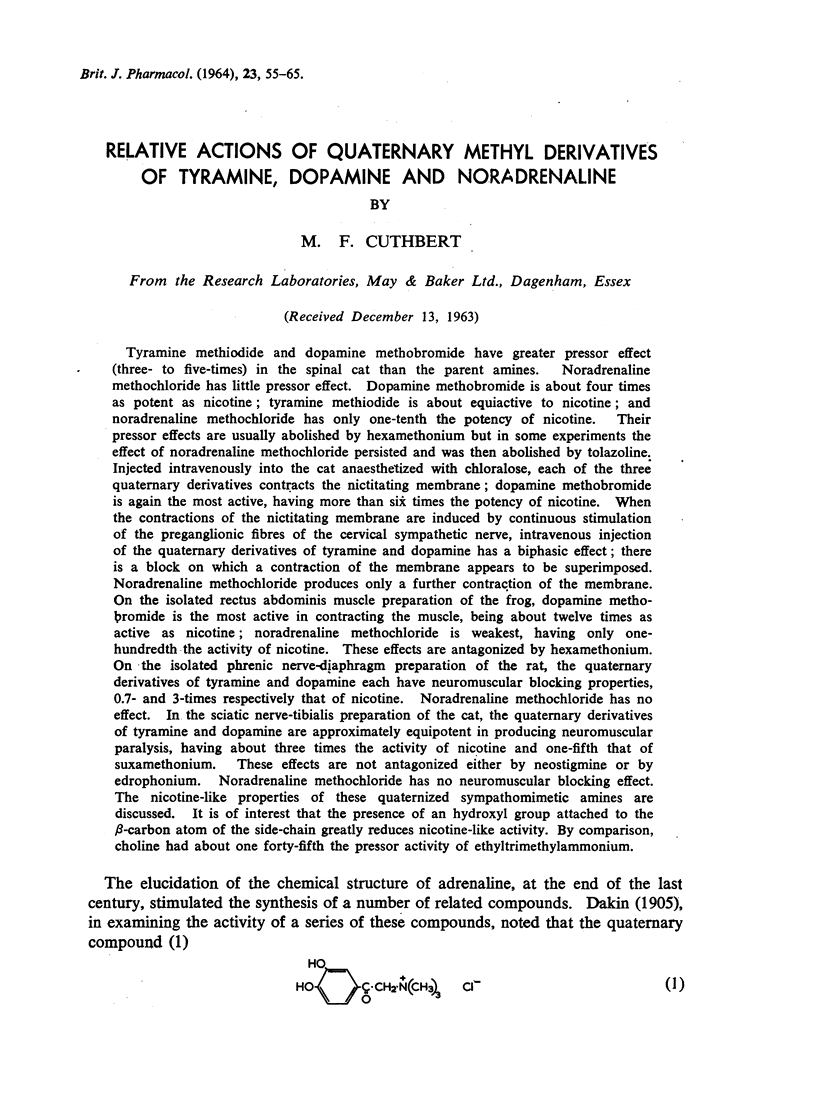
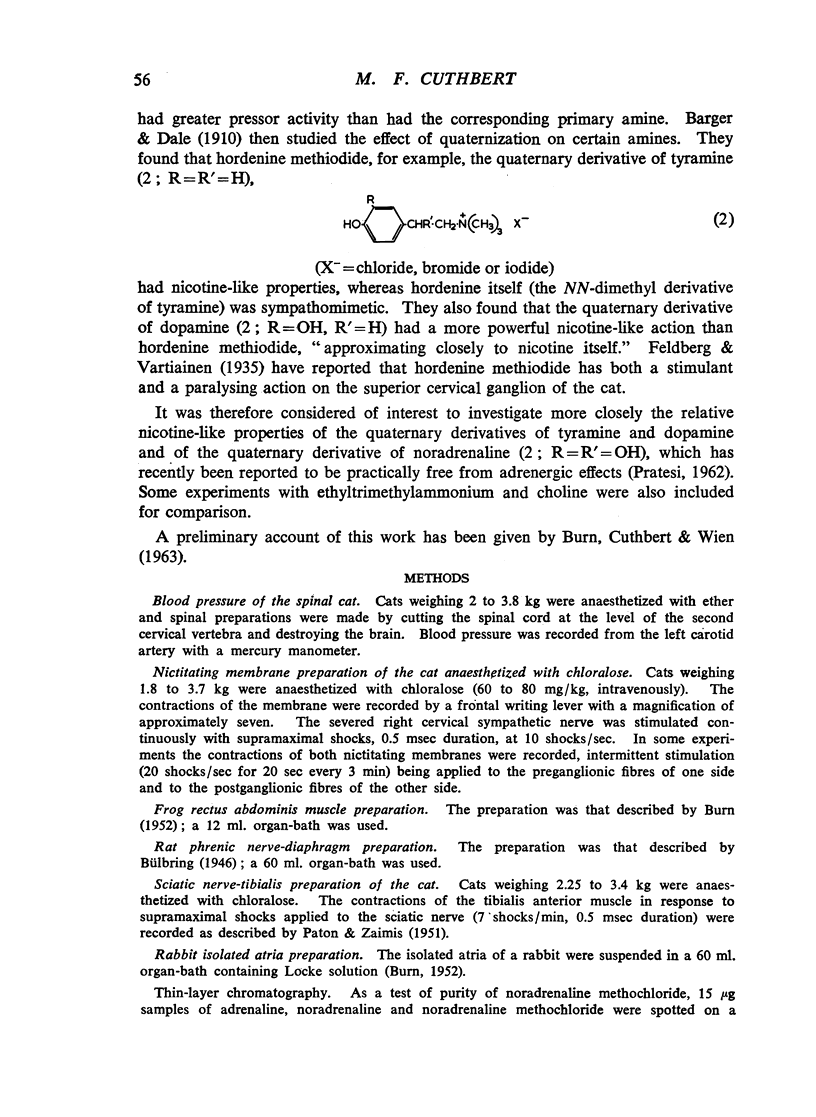
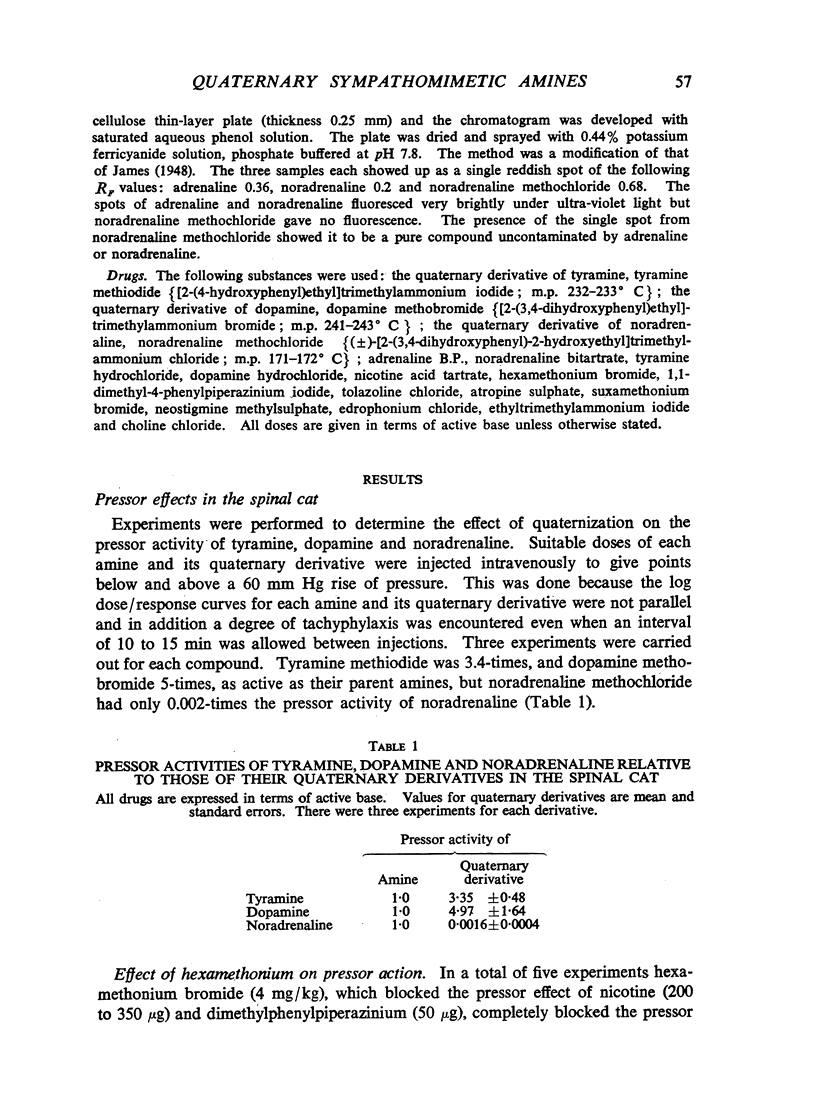
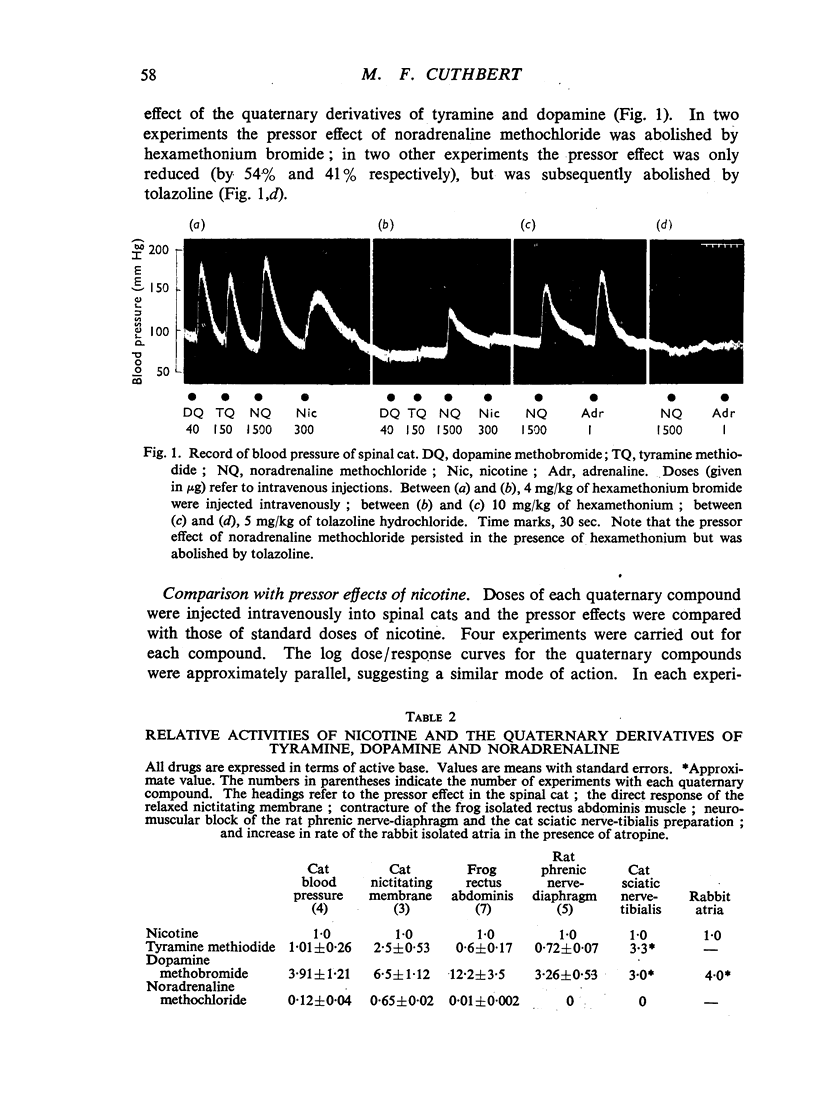
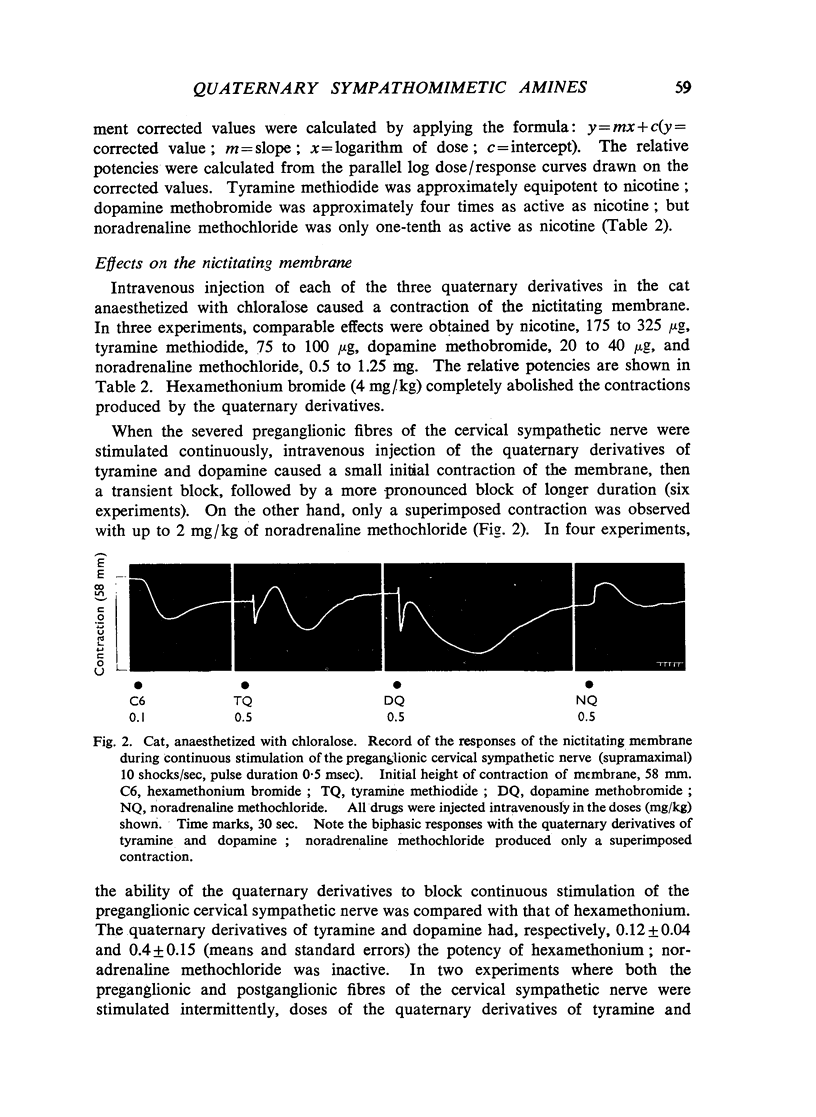
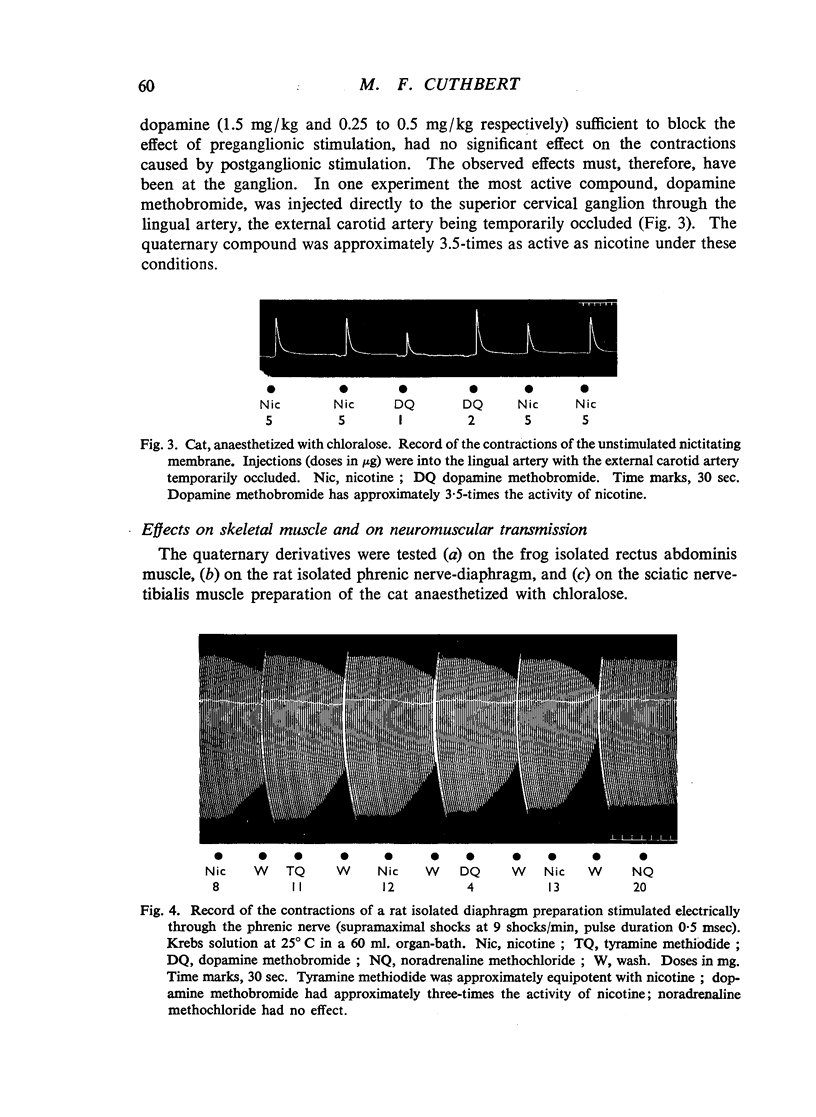
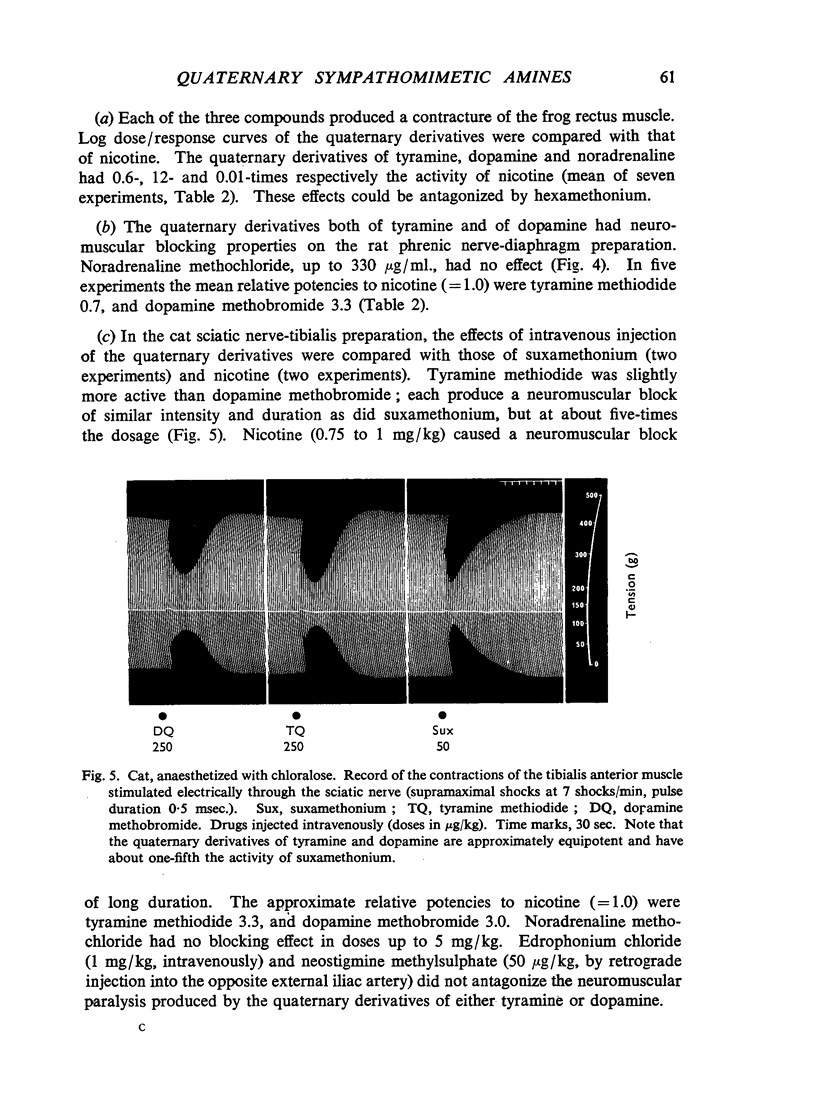
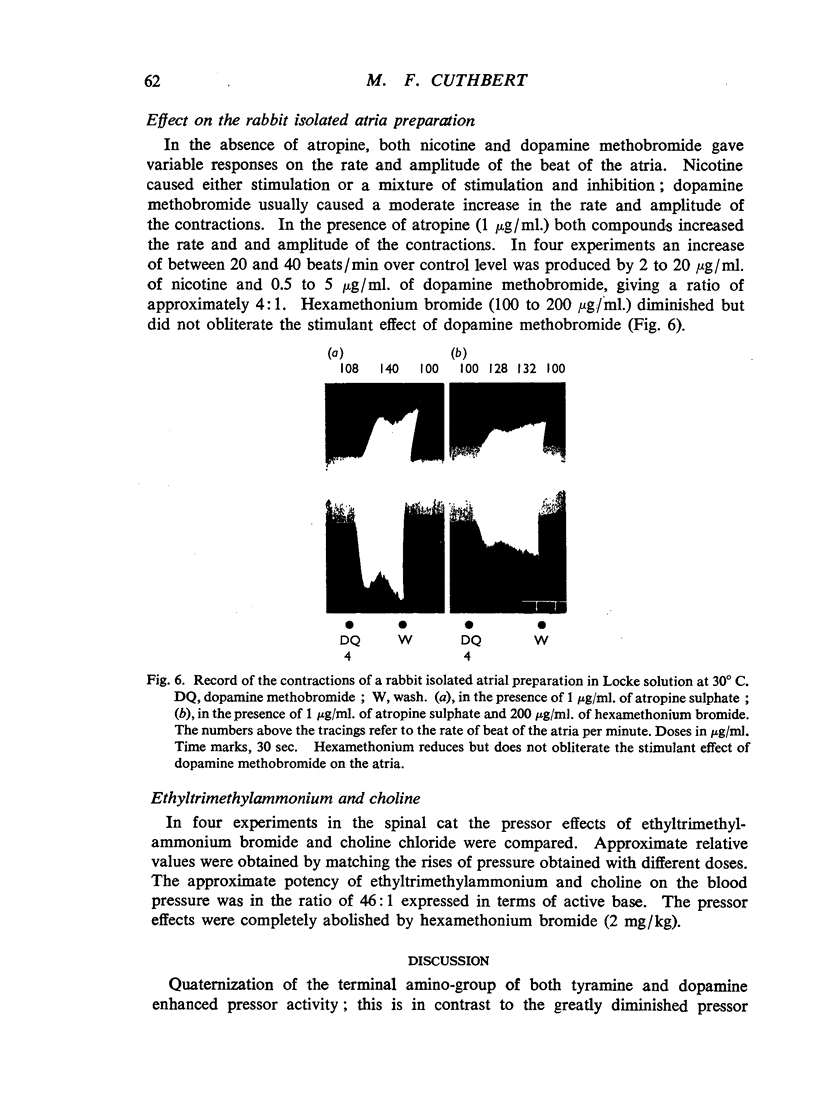
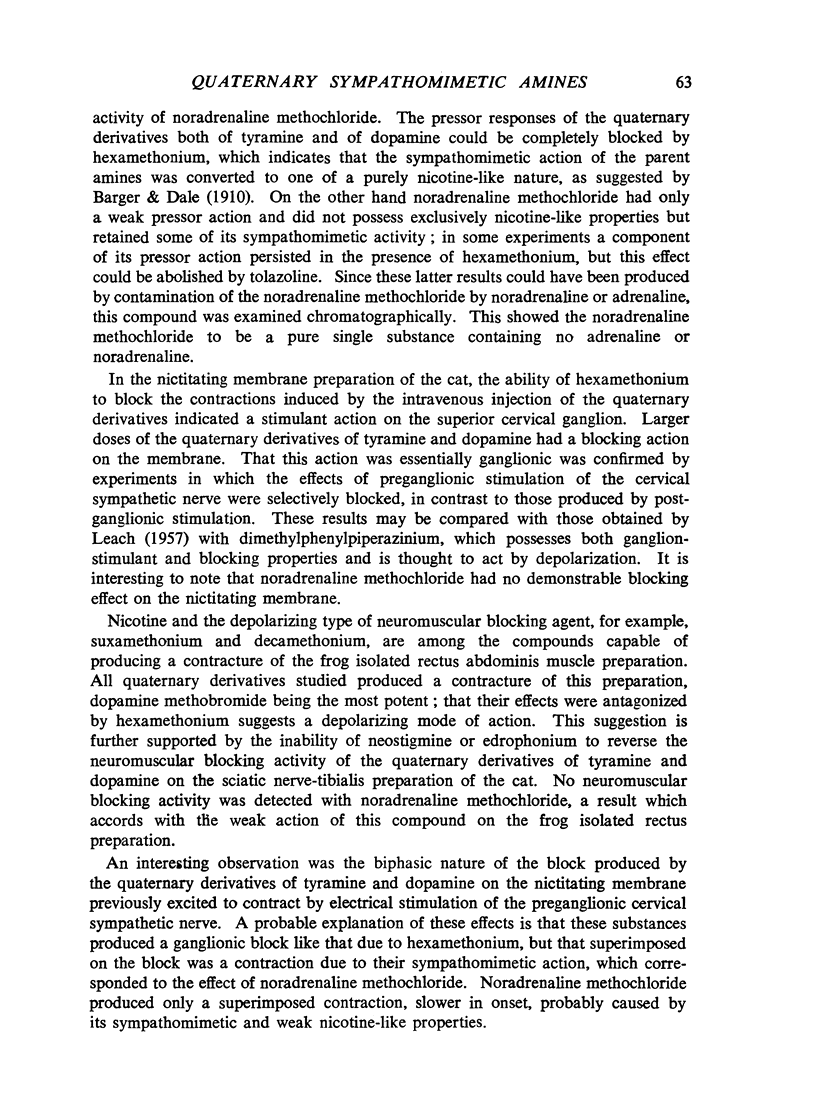
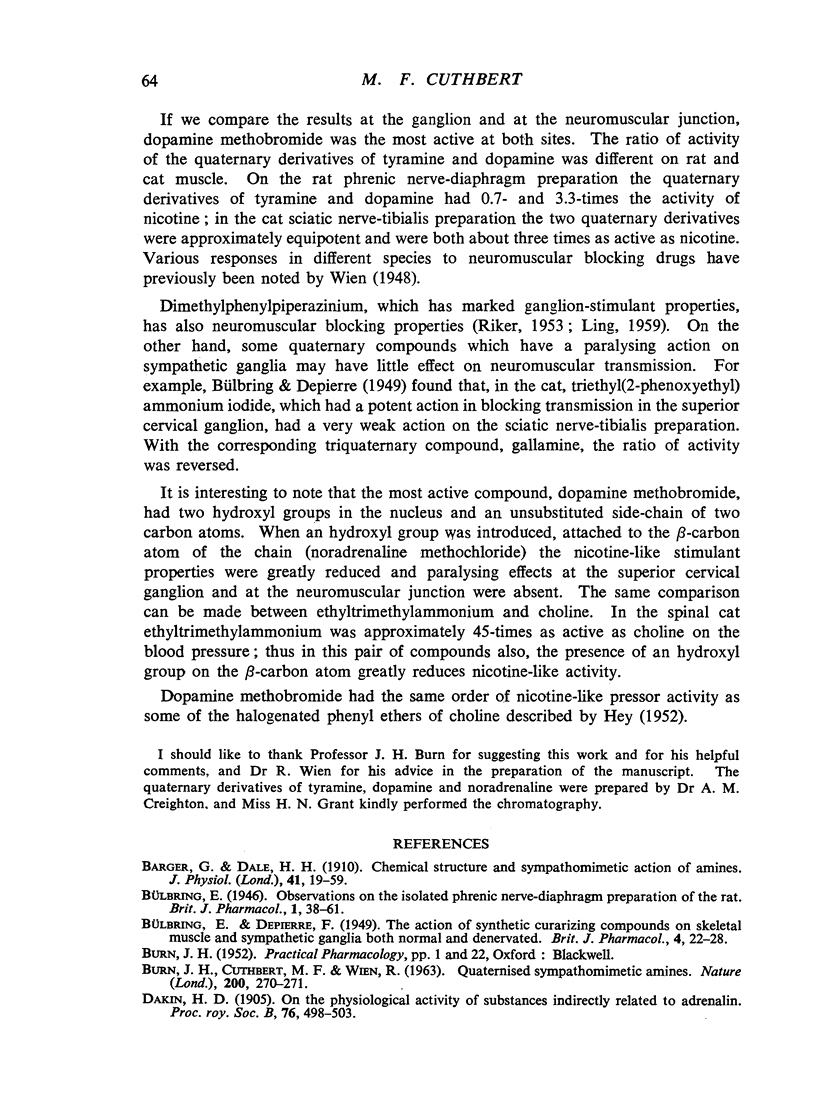
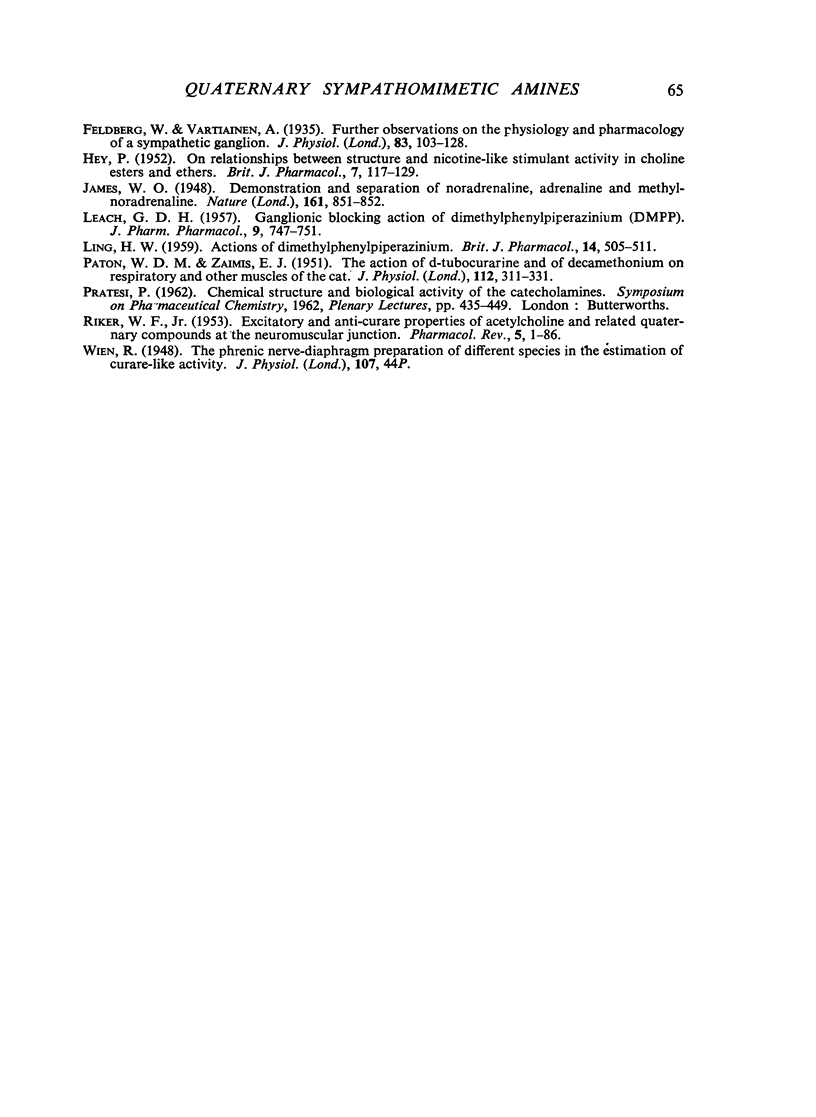
Selected References
These references are in PubMed. This may not be the complete list of references from this article.
- BURN J. H., CUTHBERT M. F., WIEN R. QUATERNIZED SYMPATHOMIMETIC AMINES. Nature. 1963 Oct 19;200:270–271. doi: 10.1038/200270b0. [DOI] [PubMed] [Google Scholar]
- Barger G., Dale H. H. Chemical structure and sympathomimetic action of amines. J Physiol. 1910 Oct 11;41(1-2):19–59. doi: 10.1113/jphysiol.1910.sp001392. [DOI] [PMC free article] [PubMed] [Google Scholar]
- Feldberg W., Vartiainen A. Further observations on the physiology and pharmacology of a sympathetic ganglion. J Physiol. 1934 Dec 14;83(1):103–128. doi: 10.1113/jphysiol.1934.sp003214. [DOI] [PMC free article] [PubMed] [Google Scholar]
- HEY P. On relationships between structure and nicotine-like stimulant activity in choline esters and ethers. Br J Pharmacol Chemother. 1952 Mar;7(1):117–129. doi: 10.1111/j.1476-5381.1952.tb00697.x. [DOI] [PMC free article] [PubMed] [Google Scholar]
- LEACH G. D. Ganglionic blocking action of dimethylphenylpiperazinium (DMPP). J Pharm Pharmacol. 1957 Nov;9(11):747–751. doi: 10.1111/j.2042-7158.1957.tb12333.x. [DOI] [PubMed] [Google Scholar]
- LING H. W. Actions of dimethylphenylpiperazinium. Br J Pharmacol Chemother. 1959 Dec;14:505–511. doi: 10.1111/j.1476-5381.1959.tb00957.x. [DOI] [PMC free article] [PubMed] [Google Scholar]
- PATON W. D. M., ZAIMIS E. J. The action of d-tubocurarine and of decamethonium on respiratory and other muscles in the cat. J Physiol. 1951 Feb;112(3-4):311–331. doi: 10.1113/jphysiol.1951.sp004531. [DOI] [PMC free article] [PubMed] [Google Scholar]
- RIKER W. F., Jr Exicitatory and anticurare properties of acetylcholine and related quaternary ammonium compounds at the neuromuscular junction. Pharmacol Rev. 1953 Mar;5(1):1–86. [PubMed] [Google Scholar]


